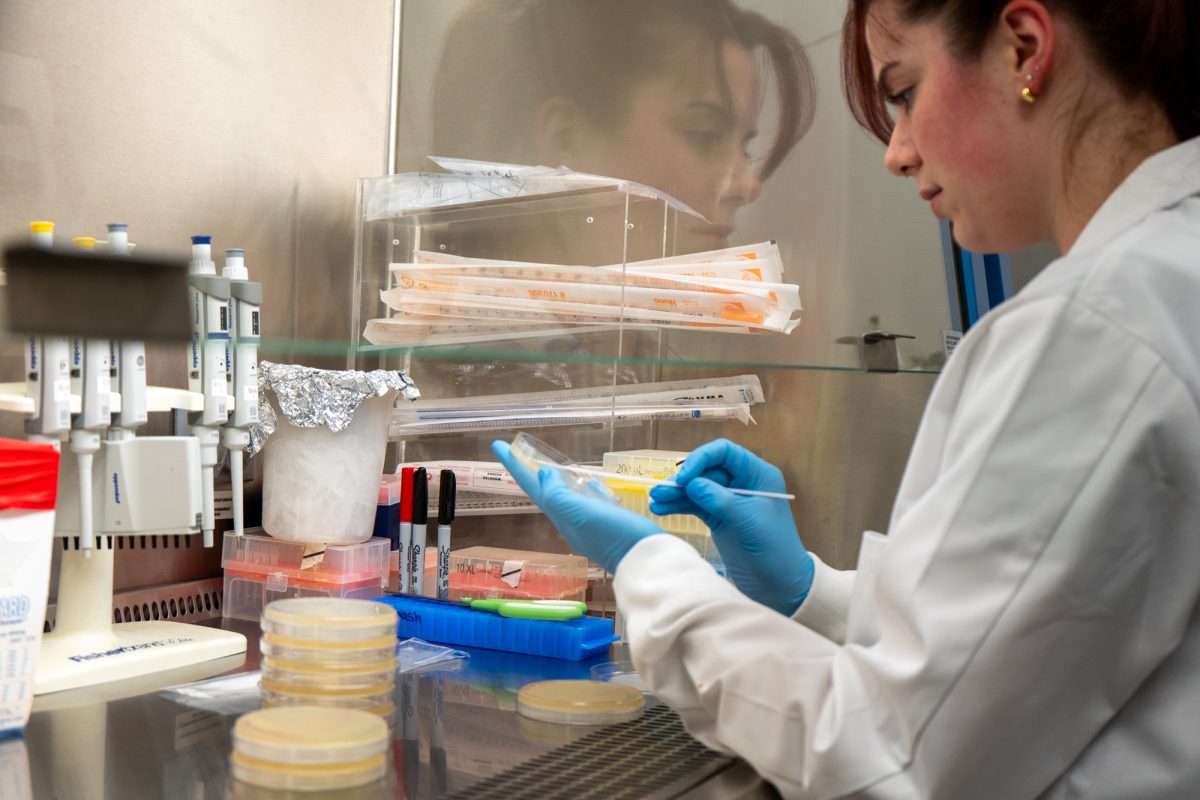Soldiers are exposed to potentially harmful diseases on a daily basis. A disease that may cause no symptoms in one person may cause serious illness in another, and figuring out what causes this disparity may lead to new ways to combat potentially life-threatening ailments to deployed soldiers.
A research team at Texas A&M University was awarded a $3.2 million grant from the Department of Defense’s Defense Advanced Research Projects Agency (DARPA) to explore this possibility. Co-led by David Threadgill and Helene Andrews-Polymenis, the team is making an effort to understand what makes some people tolerant to infectious agents while others are much more susceptible to infection.
David Threadgill is a distinguished professor at Texas A&M University in the Department of Molecular and Cellular Medicine and the Department of Veterinary Pathobiology. Threadgill said the goal of the project is geared toward figuring out what makes someone tolerant of infectious diseases.
“The outcome is to hopefully identify the genes that make someone tolerant,” Threadgill said. “The other aspect of the project involves developing therapeutic interventions or medicines that mimic these genetic pathways and make a non-tolerant individual pharmacologically tolerant.”
Tolerance means the individual is infected but does not develop classical characteristics of being sick. In order to show the role genetics plays in tolerance, a unique population of mice is being used, Threadgill said.
“This special population of mice has been engineered to have genetic diversity resembling a regular human population,” Threadgill said. “This mice population serves as a proxy for how the disease behaves in human populations. Using genetic analysis, we can identify what is making those individuals tolerant and protecting the organism.”
Helene Andrews-Polymenis, associate professor in the Department of Microbial Pathogenesis and Immunology and expert in infectious diseases, exposes the infections to the different clinical studies.
“My role in this project is to perform the infections and follow the development of the clinical disease in infected animals,” Andrews-Polymenis said. “Utilizing this special population of mice, we hope to see differences in susceptibility to infection based on each individual’s genetics.”
Andrews-Polymenis said she is optimistic for future implications of this research.
“Individuals exposed to some infectious agents, like Mycobacterium tuberculosis for example, have variable outcomes on a spectrum from no infection, to latent infection, to full blown tuberculosis,”Andrews-Polymenis said. “Studying the differences in the hosts that determine susceptibility is an exciting topic and may yield important advances in the future.”
Biomedical sciences senior Santiago Forero believes this research may have vital implications on preventative healthcare.
“Discovering the genetic factors that make us different and immune to some pathogens while others are not, is understanding how to work with nature rather than just blindly treating symptoms,” Forero said. “I think the world could greatly benefit from more genetic research like this investigating the causes, effects and relationships between pathogens and our human systems.”
A&M research team receives $3.2 million grant to research disease disparity in soldiers
April 24, 2017
Photo by Graphic by Rachel Grant
An A&M research team was awarded a $3.2 million grant from the Defense Department in order to combat diseases that vary in severity based on soldiers’ genes.
0
Donate to The Battalion
Your donation will support the student journalists of Texas A&M University - College Station. Your contribution will allow us to purchase equipment and cover our annual website hosting costs.
More to Discover








